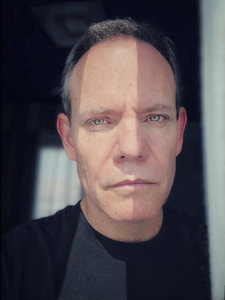
We rarely consider the value of our senses until one begins to fade. I took my sight for granted—until the evening I woke from a nap and the right side of my vision was altered. A retinal stroke. A sudden and permanent shift—like a broken hand held in front of my face.
That loss redefined how I walked through the world--how I remembered what I saw daily. I began to understand the shift not only as a loss, but oddly as a strange kind of enhancement. I found myself romanticizing what remained—not out of denial, but as a way to stay close to those I love. My camera became a way back to them, and to myself.
In this image, I photographed my partner's profile through the veil of a horizontal flare. What might appear as a digital artifact is, for me, a visual truth—a colored streak that mirrors the distortions I now live with. It sweeps across her face like a ribbon, cutting the frame and the moment in two.
The ribbon isn't an accident. I worked directly on the camera's sensor—altering it in much the same way my own sight was changed. These small interventions became a form of understanding. A therapeutic, physical object lesson in how the body can grieve, adapt, and find new ways of seeing.
Image description: Close-up, out-of-focus profile of a woman facing the spectator's right. Her skin glows with pinkish hues. The background is dark teal. A translucent, darker pink streak runs across the frame and on top of the upper half of her face.
- Subject Matter: Portrait










